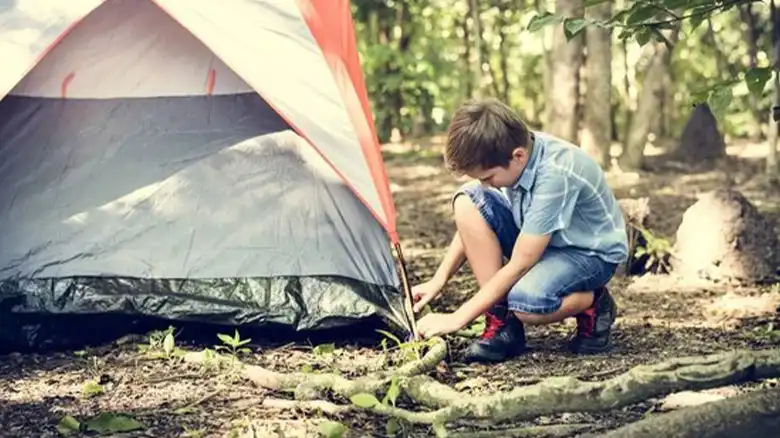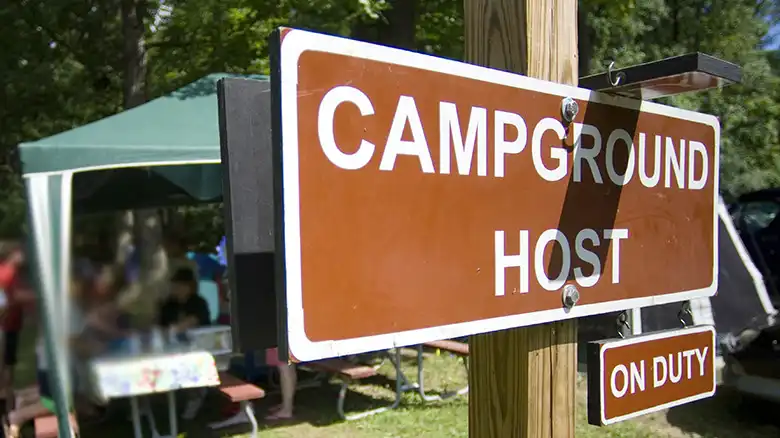Camping in the woods can be an incredibly rewarding and rejuvenating experience, allowing you to connect with nature, unwind from the hustle and bustle of daily life, and create lasting memories. However, safety should always be a top priority when venturing into the wilderness.
With proper knowledge and safety measures, camping in the woods can be a fun and enjoyable experience.
In this article, I will explore the safety aspects of camping in the woods and provide you with valuable tips to ensure your outdoor adventures are not only enjoyable but also secure.

Is Camping in the Woods Safe?
Before delving into the specifics of how to ensure your safety while camping in the woods, let’s address the fundamental question: Is it safe to camp in the woods?
Camping in the woods can be very safe when you take the appropriate precautions and make well-informed decisions. However, there are inherent risks associated with spending time in the wilderness. Understanding these risks is the first step in ensuring your safety.
Selecting a Safe Campsite: What You Need to Know
Selecting the right location for your camping trip is crucial for ensuring your safety. Here’s what you need to consider:
Research and Planning: Start by researching the area where you plan to camp. Look for designated campgrounds with established facilities and security measures. If you’re heading to a more remote location, check local regulations, permits, and potential safety concerns.
Legal and Safe: Ensure that your chosen campsite is legal and safe for camping. Always respect the rules and guidelines set by land management agencies and local authorities.
The Importance of Informing Someone About Your Plans
One of the most critical safety measures is informing someone about your camping plans. This step is often overlooked but can be a lifesaver:
Share Your Plans: Before you head into the woods, let a trusted friend or family member know your camping plans. Provide them with details like your exact location, expected return date, and any contact information for the park rangers or local authorities.
Emergency Contacts: Have a list of emergency contacts readily available, including the nearest ranger station, park authorities, and local search and rescue teams.
Essential Supplies for a Safe Camping Experience
Being well-prepared and having the right supplies can significantly enhance your safety in the woods. Here’s what you need:
Camping Gear: Invest in high-quality camping gear, including a reliable tent, sleeping bag, cooking equipment, and clothing suitable for the expected weather conditions.
Food and Water: Carry enough food for your trip and a way to purify additional water from natural sources if needed. Pack non-perishable food items and a water filter or purification tablets.
Mastering Basic Wilderness Skills for Safety
Gaining basic wilderness survival skills is essential for ensuring your safety in the woods. Here’s what you should learn:
Fire-Building: Master the art of building and maintaining a campfire. It can provide warmth, cook your meals, and serve as a signal in emergencies. Always follow local fire regulations.
Navigation: Learn how to read maps and use a compass. Navigation skills are crucial for staying on track and finding your way back if you get lost.
First Aid: Equip yourself with a comprehensive first-aid kit and know how to use it. Being able to address minor injuries or health issues can prevent them from becoming major problems.
Staying Safe Around Wildlife: Awareness and Precautions
Understanding and respecting the wildlife in the area where you’re camping is key to your safety:
Research Local Wildlife: Before your trip, research the wildlife in the region. Know how to recognize and avoid potentially dangerous animals, like bears or snakes.
Food Storage: Store your food securely to prevent attracting wildlife to your campsite. Use bear canisters, bear bags, or other appropriate food storage methods.
Campfire Safety: Best Practices to Follow
Campfires are a classic part of the camping experience, but they come with their own set of safety considerations:
Follow Regulations: Always adhere to local fire regulations and guidelines. Campfires should be small, controlled, and never left unattended.
Extinguishing Fires: Learn how to properly extinguish a campfire. Pour water on the embers, stir, and repeat until the fire is completely out.
Practicing Leave No Trace Principles
Preserving the beauty of the natural environment for future generations is a responsibility of all campers:
Pack Out All Trash: Follow the Leave No Trace principles, which include packing out all trash. Dispose of waste in designated containers or carry it out with you.
Minimize Impact: Avoid damaging vegetation and disturbing wildlife. Camp in established campsites and avoid trampling on fragile ecosystems.
Understanding Weather Conditions for Safe Camping
Weather conditions can change rapidly in the wilderness, so staying informed is crucial:
Stay Informed: Keep an eye on local weather forecasts before and during your trip. Be prepared for various weather conditions and have appropriate clothing and shelter on hand.
Prioritizing Personal Safety in the Woods
In addition to wilderness skills and safety precautions, personal safety is equally important:
Stay Cautious: Keep a safe distance from unknown individuals or groups you encounter in the woods. Trust your instincts and use caution when interacting with strangers.
Emergency Communication Tools for Campers
Carrying the right communication devices can be a game-changer in case of emergencies:
Communication Devices: Consider carrying a satellite phone, a personal locator beacon (PLB), or a two-way radio for emergency communication. These devices can help you call for help if needed.
Getting to Know Your Camping Area in Advance
Knowing the lay of the land can prevent you from getting lost and enhance your safety:
Study Maps: Study maps of the area you’ll be camping in before your trip. Familiarize yourself with landmarks, trails, and potential hazards.
First Aid and Medical Preparedness for Campers
Beyond basic first-aid skills, being prepared with medical supplies is crucial for safety:
First-Aid Kit: Carry a well-stocked first-aid kit, including bandages, antiseptics, pain relievers, and any prescription medications you may need.
Expert Tips for Safer Camping Adventures
Now that you’ve learned the essentials of safe camping in the woods, here are some additional pro tips:
Travel in a Group: Camping with a group can provide additional safety and support, especially in remote areas.
Test Your Gear: Before heading into the wilderness, test all your camping gear and equipment to ensure everything is in working order.
Learn Basic Self-Defense: Knowing how to defend yourself can be a valuable skill in remote locations. Consider taking a self-defense class.
Leave an Itinerary: In addition to notifying someone of your plans, leave a detailed itinerary in your vehicle or with a friend, including your planned route and expected return date.
Stay Hydrated: Dehydration can be a significant risk in the outdoors. Drink plenty of water, even if you don’t feel thirsty.
Be Mindful of Hygiene: Maintain good hygiene to prevent illness. Proper handwashing and sanitation are essential, even in the wilderness.
Conclusion
Camping in the woods is a fantastic way to reconnect with nature and escape the daily grind, but it’s essential to prioritize safety above all else. By following the tips and guidelines presented in this article, you can significantly reduce the risks associated with camping in the woods and ensure a safe and enjoyable outdoor experience. Remember that safety is a shared responsibility, and every camper plays a role in protecting themselves, others, and the natural environment.


